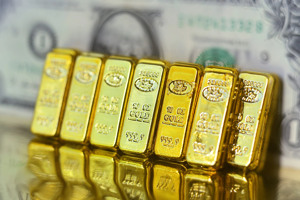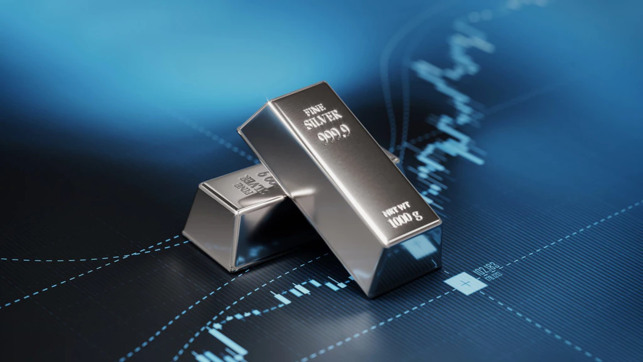Tavex uses cookies to ensure website functionality and improve your user experience. Collecting data from cookies helps us provide the best experience for you, keeps your account secure and allows us to personalise advert content. You can find out more in our cookie policy.
Please select what cookies you allow us to use
Cookies are small files of letters and digits downloaded and saved on your computer or another device (for instance, a mobile phone, a tablet) and saved in your browser while you visit a website. They can be used to track the pages you visit on the website, save the information you enter or remember your preferences such as language settings as long as you’re browsing the website.
| Cookie name | Cookie description | Cookie duration |
|---|---|---|
| tavex_cookie_consent | Stores cookie consent options selected | 60 weeks |
| tavex_customer | Tavex customer ID | 30 days |
| wp-wpml_current_language | Stores selected language | 1 day |
| AWSALB | AWS ALB sticky session cookie | 6 days |
| AWSALBCORS | AWS ALB sticky session cookie | 6 days |
| NO_CACHE | Used to disable page caching | 1 day |
| PHPSESSID | Identifier for PHP session | Session |
| latest_news | Helps to keep notifications relevant by storing the latest news shown | 29 days |
| latest_news_flash | Helps to keep notifications relevant by storing the latest news shown | 29 days |
| tavex_recently_viewed_products | List of recently viewed products | 1 day |
| tavex_compare_amount | Number of items in product comparison view | 1 day |
| Cookie name | Cookie description | Cookie duration |
|---|---|---|
| chart-widget-tab-*-*-* | Remembers last chart options (i.e currency, time period, etc) | 29 days |
| archive_layout | Stores selected product layout on category pages | 1 day |
| Cookie name | Cookie description | Cookie duration |
|---|---|---|
| cartstack.com-* | Used for tracking abandoned shopping carts | 1 year |
| _omappvp | Used by OptinMonster for determining new vs. returning visitors. Expires in 11 years | 11 years |
| _omappvs | Used by OptinMonster for determining when a new visitor becomes a returning visitor | Session |
| om* | Used by OptinMonster to track interactions with campaigns | Persistent |
| Cookie name | Cookie description | Cookie duration |
|---|---|---|
| _ga | Used to distinguish users | 2 years |
| _gid | Used to distinguish users | 24 hours |
| _ga_* | Used to persist session state | 2 years |
| _gac_* | Contains campaign related information | 90 days |
| _gat_gtag_* | Used to throttle request rate | 1 minute |
| _fbc | Facebook advertisement cookie | 2 years |
| _fbp | Facebook cookie for distinguishing unique users | 2 years |
Gold Dethrones Euro: a Quiet Revolution in Finance

For the first time in a decade, gold has dethroned the euro to become the second-largest reserve asset after the dollar. This shift reflects a shift in the global monetary, economic and geopolitical order, as well as inflationary risks and a decline in confidence in currencies.
Massive gold purchases by central banks have pushed gold past the euro as a global reserve asset. It is now second only to the dollar, a position last seen in 2011-12. This is part of a broader trend where the euro and dollar are losing their importance in global finance, while gold is gaining.
The pressure on the current monetary system is increasing, and real assets are becoming increasingly important for countries, investors, and ordinary people. It is real assets that provide protection against poor government decisions and economic and geopolitical crises.
Main reserve assets have changed over the century
The most notable is the gradual decline of the dollar – in 2000, the share of the USD in reserves reached 58.9 percent, by the end of last year it was 46.5 percent. The share of the euro is also at its lowest level since the early 2000s, when the euro was newly introduced. However, the increase in the share of alternative currencies is somewhat notable.
Central banks hold foreign exchange reserves to stabilise their exchange rates when necessary, improve the country’s financial position, and ensure economic stability.
Central Bank Purchases and Gold Price Rise

The dollar’s decline has accelerated, particularly since the start of the war in Ukraine, when Russia’s foreign exchange reserves held in dollars and euros were frozen. This was one of the reasons why many developing countries started buying up gold.
Central banks have been buying more than 1,000 tons of gold annually for three consecutive years. Before 2022, the last time central bank purchases were this large was in 1950.
The price of gold has risen rapidly in the past few years, and its share in central bank reserves has reached 19.6 percent, the European Central Bank said in an analysis published on Wednesday last week.
Central banks now hold more than 36,000 tons of gold
The record dates back to the 1960s, when central banks held 38,000 tons of gold. At that time, the Bretton Woods gold standard system was in place, where the dollar was backed by gold and other currencies were backed by dollars. The gold standard was abandoned in 1971.
Gold is Increasingly Important for Central Banks

Gold allows central banks to diversify their assets and protect their economies against inflation and crises. Adam Glapniski, the head of the Polish central bank, has aptly said: “If the global financial system were to be unplugged, gold would still retain its value.”
Gold is becoming increasingly attractive to emerging markets, whose share of the global economy is growing. Many developing countries want to have a geopolitically neutral reserve asset that is not open to sanctions and confiscation.
A survey released this week by the World Gold Council found that central banks buy and hold gold primarily for three reasons: first, protection against crises, second, diversification of investments, and third, inflation protection.
A large majority of respondents (73%) believe that the US dollar’s share of global reserves will decline moderately or significantly over the next five years. Over the same period, central banks expect the share of gold to continue to grow.
The data reflects a broader trend where the importance of gold is increasing in the long term due to the decline in the credibility of currencies and governments. At the same time, government bonds are losing their “safe haven” status – while in previous decades they offered “risk-free” returns and protection against crises, now the situation has changed significantly.
The world’s financial, economic and geopolitical order is changing rapidly, and changes in the proportions of reserve assets are reflecting this.
Key Takeaways
The resurgence of gold as a leading global reserve asset marks more than just a symbolic shift – it signals a deeper transformation in the world’s financial and geopolitical landscape.
Central banks’ record-breaking gold purchases highlight growing scepticism toward traditional fiat currencies and a collective desire for stability in an era of heightened economic and political uncertainty.
As confidence in the dollar and euro wanes, gold’s timeless appeal as a store of value and geopolitical hedge grows stronger.
Looking ahead, this quiet revolution suggests that gold will play an even more prominent role in shaping the future of global finance, potentially redefining what nations and investors alike consider to be truly “safe” assets.


















